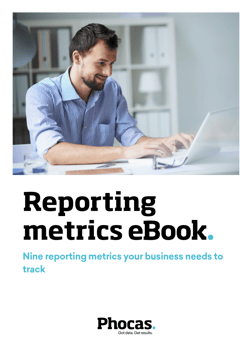Jurox is a family owned Australian animal health company using BI reporting. The company decided on Epicor Data Analytics (EDA) powered by Phocas because of its simple integration with the Epicor ERP and BI reporting capabilities.
What to expect from BI reporting

Gone are the days spending hours generating reports that immediately lead to more questions. Your obsolete reporting software or homegrown tools are leaving your business exposed to a range of critical risks and missed opportunities. BI reporting allows you to quickly, visually and cost-effectively get the answers you need to conduct business, manage budgets, and make accurate decisions.
The ability to turn raw company data into actionable intelligence is at the core of today’s successful businesses.
Data is increasingly more important to everyone’s role. Its value is in helping people do their jobs better, improve efficiencies and customer service, counter competitors and increase profit margins. BI reporting provides a complete picture of how your business is performing.
Visualizations
A key feature of business intelligence reporting is the visualization of the data in charts, graphs and tables. These diagrams making the information clear to understand and accessible.
According to the Social Science Research Network, 65% of the population are visual learners. In business, visualizations can enhance employee productivity and your entire organization's output. Visualizations help you and your staff make important decisions faster.
The main goal of business intelligence reporting is to make data easy to understand so that accurate analysis can be efficiently carried out. Reporting is a necessary prerequisite of the analysis stage. BI collects and presents data that is ready to be analyzed. Business Intelligence reporting empowers the end-users with the information to become experts in their corresponding area of business.
Benefits of BI reporting visualisation are:
- see relationships and patterns between operational and business activities
- identify and act on emerging trends faster
- tell a story with your data
- enhances employee productivity
Answer your questions
BI reporting is ad hoc, meaning you can carry it out out whenever you need to answer a question or check the KPIs you are monitoring. The underlying figures in reports can be presented to backup actions and explain decision-making behaviors and often the real value lies in the data behind the metrics.
Reporting might show that four of your sale reps are below budget this month. That’s a 'what happened' style of reporting. What BI reporting can tell you is the 'why' because you can slice or dice the information presented. Business Intelligence reporting can marry the sales data to other outside data through a common dimension, like time.
With BI Reporting you can also take a look at how the reps perform this month vs last month in sales. You then break that down by product groups to find the lines they aren't selling. Then you change the measure to be gross profit instead of sales value to obtain another perspective about their performance.
Business Intelligence environments like Phocas can pull in CRM data or payroll information which explains that the reps in question have been away or were be instructed to sell more of the low value products that are taking up space in the warehouse.
BI reporting helps demonstrate meaningful correlations that can be used to change the direction or instruction given to the sales reps.
BI reporting that everyone can use
The greater the accuracy, the comprehensiveness and speed of accessing BI reporting and information, the better the decisions will be about and for the business.
Find out more about BI reporting by downloading this free eBook, Reporting metrics.

Empowering businesses with intuitive data analytics, driving informed decisions for growth and profitability. We make people feel good about data.

How technology is fixing the finance talent shortage and bringing a renaissance
Accounting is one of the oldest professions, with double-entry bookkeeping tracing back to Roman merchants in the 14th century. And the genius of a system in which every transaction is recorded with an opposite entry in a different account continues to be standard practice. Just as accounting emerged during the shift from the Middle Ages to the Renaissance, today’s finance teams must also adapt to new challenges and opportunities.
Read more
An accurate view of your business’ finances: it’s not too hard to get
Finance teams are increasingly under pressure to provide CEOs and other executives with information related to their business’ current financial scenario — but it’s not always easy for them to do so.
Read more
Project cost management
Managing project costs can often feel like an uphill battle. Unexpected expenses, budget overruns and lack of financial visibility are common issues that can derail even the most well-planned projects. These challenges not only cause stress but also jeopardize the project's success and client satisfaction.
Read more
The wide appeal of self-service reporting
Your own data is a critical asset that can drive business growth, improve decision-making, and boost customer satisfaction. Among the various tools available, self-service reporting solves one of the most significant barriers to real-time data analysis—accessibility.
Read more
Find out how our platform gives you the visibility you need to get more done.
Get your demo today